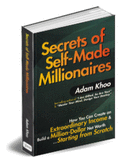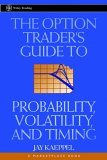Professional Stock Investment Advice - Most Common Trading Mistakes
by: David Jenyns
The best Stock Market advice you will ever read is to learn from mistakes when someone else has made them. So, this stock market advice list I made a list of some of the most common trading mistakes that are made. Even I’ve made some of these. If you have already made some of the mistakes, you can rest assured that you aren’t alone in making them. If you haven’t made them, then here’s a way to get around having to learn by making the mistakes yourself, by reading my stock market advice list.
The Stock Market advice tip #1, and worst mistake that people make is that they believe trading is the easy answer, a way to get rich quickly. People will often expect to become wizards in the market overnight, but they fail to realize that trading is like any profession; you must learn how to do it first.
For example, would you attend a weekend doctor’s seminar and expect to conduct heart surgery on Monday? Of course not! I am shocked at what people expect when they go to a weekend trading seminar. They think they will create wealth without having to work, invest or think, and it just doesn’t happen that way.
After treating trading like a get rich quick scheme, my next stock market advice tip #2 and most common mistake, is to approach the market without a plan. Without a trading plan, traders approach the market in an inconsistent manner. One day they trade stocks and the next they trade the foreign exchange. Or, they may use one set of indicators one day, and the next day they will throw these indicators out the window and take on a completely new set. Without a consistent approach, the only thing governing their trading decisions is really emotions, and that will doom them to failure.
If a new trader has managed to skip these last two mistakes, they often fall down when they try to go it alone. This is my Stock Market advice #3, all traders should find themselves a coach, or a mentor. Someone who can help them spot the errors in their system that they might not have noticed. An outside point of view can help you avoid other costly mistakes, and greatly increase your profits.
These are some common and quite basic mistakes. The next errors I’ll mention are ones that are just as prevalent in the trading industry, but they often occur once traders have been around for a while. I have some personal experience with these mistakes. Let’s call this stock market advice list, the three most expensive mistakes I’ve made.
My stock market advice mistake tip #4, or the first most expensive mistake, I made was to search for the “Holy Grail” of trading. This was an incredible waste of both time and money. During the first three years of my trading career, I spent over $25,677 on a library full of books, videos and seminars as well as spending thousands of hours in search of the perfect trading methods. Honestly, 95% of what I bought was pure junk… I should have listened to my mentor earlier and realized the “Holy Grail” of trading is simply excellent money management!
My stock market advice mistake tip #5 or the second most expensive mistake I made was not having a predefined exit point. Early in my trading career, I remember trading a stock I thought had a high percentage chance of rising. I was too confident. I fully leveraged the position. Unfortunately, when things did not go as planned, I did not know when to exit, and was paralysed. I kept rationalizing why I should hold onto that stock. As the stock continued to fall, I made more and more excuses. At the very end, I remember thinking, “I can’t take it anymore!”
I sold out. That, of course, was the point the stock turned.
I learned two very valuable lessons that day. First, always have your exit points predefined. Second, big losses once started out as small losses, and it is much easier to take a small loss than a big one.
My Stock Market advice mistake tip #6 or the last most expensive mistake, I made is not one that took money out of my pocket; instead it was a mistake that made me leave money on the table. In fact, this reoccurring mistake cost me big.
Early on, I remember selling positions as soon as they showed a profit. I would not let my profits run, as I was too afraid to give the money back to the market. I figured the profit as mine. The result was that I ended up selling the stocks that were making me money.
It wasn’t until my mentor explained to me that when you are trading, and showing a profit, that is the point where you should be adding to the position, not closing it out, that I began to understand what I was doing. Once I started following his advice, my trading profits soared.
Trading is not an easy profession, but it give you great rewards. Avoid these common errors on my Stock Market advice list, create a simple, well-designed trading system, and learn your market. If you take the time to study the market, and learn from other’s mistakes as well as your own, you will become a successful trader.
----------------------------------------------------------------------------------
About The Author
David Jenyns is recognized as the leading expert when it comes to designing profitable trading systems. Discover the "secret formula" of trading that anyone can use to consistently generate BIG profits from the market by downloading your FREE copy of David's new Ultimate Trading Systems course. Click Here To Download ==> Trading Systems http://www.ultimate-trading-systems.com
The best Stock Market advice you will ever read is to learn from mistakes when someone else has made them. So, this stock market advice list I made a list of some of the most common trading mistakes that are made. Even I’ve made some of these. If you have already made some of the mistakes, you can rest assured that you aren’t alone in making them. If you haven’t made them, then here’s a way to get around having to learn by making the mistakes yourself, by reading my stock market advice list.
The Stock Market advice tip #1, and worst mistake that people make is that they believe trading is the easy answer, a way to get rich quickly. People will often expect to become wizards in the market overnight, but they fail to realize that trading is like any profession; you must learn how to do it first.
For example, would you attend a weekend doctor’s seminar and expect to conduct heart surgery on Monday? Of course not! I am shocked at what people expect when they go to a weekend trading seminar. They think they will create wealth without having to work, invest or think, and it just doesn’t happen that way.
After treating trading like a get rich quick scheme, my next stock market advice tip #2 and most common mistake, is to approach the market without a plan. Without a trading plan, traders approach the market in an inconsistent manner. One day they trade stocks and the next they trade the foreign exchange. Or, they may use one set of indicators one day, and the next day they will throw these indicators out the window and take on a completely new set. Without a consistent approach, the only thing governing their trading decisions is really emotions, and that will doom them to failure.
If a new trader has managed to skip these last two mistakes, they often fall down when they try to go it alone. This is my Stock Market advice #3, all traders should find themselves a coach, or a mentor. Someone who can help them spot the errors in their system that they might not have noticed. An outside point of view can help you avoid other costly mistakes, and greatly increase your profits.
These are some common and quite basic mistakes. The next errors I’ll mention are ones that are just as prevalent in the trading industry, but they often occur once traders have been around for a while. I have some personal experience with these mistakes. Let’s call this stock market advice list, the three most expensive mistakes I’ve made.
My stock market advice mistake tip #4, or the first most expensive mistake, I made was to search for the “Holy Grail” of trading. This was an incredible waste of both time and money. During the first three years of my trading career, I spent over $25,677 on a library full of books, videos and seminars as well as spending thousands of hours in search of the perfect trading methods. Honestly, 95% of what I bought was pure junk… I should have listened to my mentor earlier and realized the “Holy Grail” of trading is simply excellent money management!
My stock market advice mistake tip #5 or the second most expensive mistake I made was not having a predefined exit point. Early in my trading career, I remember trading a stock I thought had a high percentage chance of rising. I was too confident. I fully leveraged the position. Unfortunately, when things did not go as planned, I did not know when to exit, and was paralysed. I kept rationalizing why I should hold onto that stock. As the stock continued to fall, I made more and more excuses. At the very end, I remember thinking, “I can’t take it anymore!”
I sold out. That, of course, was the point the stock turned.
I learned two very valuable lessons that day. First, always have your exit points predefined. Second, big losses once started out as small losses, and it is much easier to take a small loss than a big one.
My Stock Market advice mistake tip #6 or the last most expensive mistake, I made is not one that took money out of my pocket; instead it was a mistake that made me leave money on the table. In fact, this reoccurring mistake cost me big.
Early on, I remember selling positions as soon as they showed a profit. I would not let my profits run, as I was too afraid to give the money back to the market. I figured the profit as mine. The result was that I ended up selling the stocks that were making me money.
It wasn’t until my mentor explained to me that when you are trading, and showing a profit, that is the point where you should be adding to the position, not closing it out, that I began to understand what I was doing. Once I started following his advice, my trading profits soared.
Trading is not an easy profession, but it give you great rewards. Avoid these common errors on my Stock Market advice list, create a simple, well-designed trading system, and learn your market. If you take the time to study the market, and learn from other’s mistakes as well as your own, you will become a successful trader.
----------------------------------------------------------------------------------
About The Author
David Jenyns is recognized as the leading expert when it comes to designing profitable trading systems. Discover the "secret formula" of trading that anyone can use to consistently generate BIG profits from the market by downloading your FREE copy of David's new Ultimate Trading Systems course. Click Here To Download ==> Trading Systems http://www.ultimate-trading-systems.com







